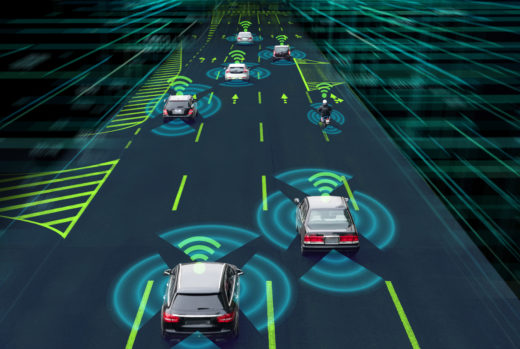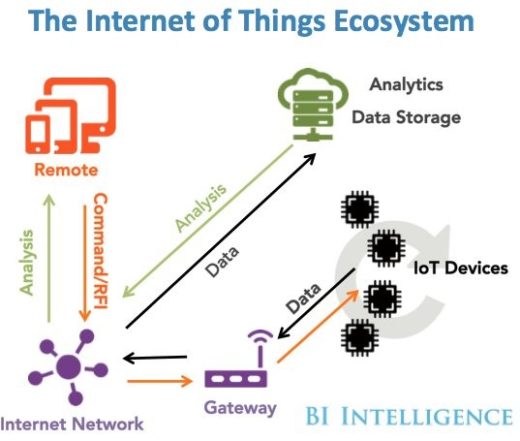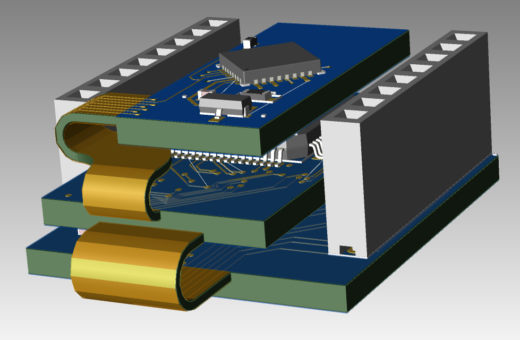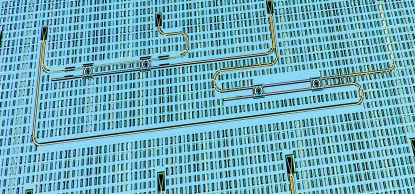Article Roundup: People vs. Autonomous Cars, IIoT Data Intelligence, Smart Buildings, Rigid-Flex PCB Designs & Integrated Silicon Photonics
- People Vs. Self-Driving Cars
- IoT and Smart Factories—Electronic Manufacturing Data Intelligence
- Making Buildings Smarter
- Managing the Challenges of Flex and Rigid-Flex Design
- Easing the Integration of Electronics and Photonics
People Vs. Self-Driving Cars
SemiEngineering
 Autonomous cars are programmed to be cautious, polite, and responsible drivers to enhance the safety of passengers, other drivers, and pedestrians. In the coming age of autonomous vehicles, autonomous and human driven cars will share the roads for decades, creating millions of human-machine interactions. How will our new AI-driven motorists respond to human drivers that can be unpredictable, aggressive, and even malicious?
Autonomous cars are programmed to be cautious, polite, and responsible drivers to enhance the safety of passengers, other drivers, and pedestrians. In the coming age of autonomous vehicles, autonomous and human driven cars will share the roads for decades, creating millions of human-machine interactions. How will our new AI-driven motorists respond to human drivers that can be unpredictable, aggressive, and even malicious?
IoT and Smart Factories—Electronic Manufacturing Data Intelligence
EMS Now
 Industrial IoT systems provide heaps of real-time data that can help manufacturers optimize their processes and increase revenue. However, extracting the full value from these systems requires advanced solutions that can aggregate and analyze incoming data to reveal key insights. This article covers the key features and functions such a system requires to maximize the value of IIoT data.
Industrial IoT systems provide heaps of real-time data that can help manufacturers optimize their processes and increase revenue. However, extracting the full value from these systems requires advanced solutions that can aggregate and analyze incoming data to reveal key insights. This article covers the key features and functions such a system requires to maximize the value of IIoT data.
Making Buildings Smarter
SemiEngineering
“Smart” buildings use technology to enhance the efficiency, convenience, profitability, and usefulness of the building. This includes sensors with built-in processing, AI chips, cloud computing and more to enhance building security, reliability, energy and resource efficiency, and ease-of-use. Smart buildings, or building automation, are generating plenty of excitement and investment, but some experts question how widely these technologies will be adopted in future structures.
Managing the Challenges of Flex and Rigid-Flex Design
I-Connect 007
 Flex and rigid-flex PCB technologies enable designers to incorporate greater functionality in smaller volumes. These technologies are important for electronic products that need to be compact, lightweight, and flexible such as smartphones, TVs, laptops and more. However, flex and rigid-flex PCBs also introduce unique constraints, making advanced tools essential for these designs.
Flex and rigid-flex PCB technologies enable designers to incorporate greater functionality in smaller volumes. These technologies are important for electronic products that need to be compact, lightweight, and flexible such as smartphones, TVs, laptops and more. However, flex and rigid-flex PCBs also introduce unique constraints, making advanced tools essential for these designs.
Easing the Integration of Electronics and Photonics
EE Times
 IC designers expect integrated silicon photonics to bring significant performance upgrades to networking and high-performance computing devices. Today, integrated photonics design is costly, time-consuming, manual, and requires photonics and electronics experts to complete. To continue semiconductor scaling, chipmakers will need to discover a way to accelerate the integration of photonics and electronic circuits in the same package.
IC designers expect integrated silicon photonics to bring significant performance upgrades to networking and high-performance computing devices. Today, integrated photonics design is costly, time-consuming, manual, and requires photonics and electronics experts to complete. To continue semiconductor scaling, chipmakers will need to discover a way to accelerate the integration of photonics and electronic circuits in the same package.